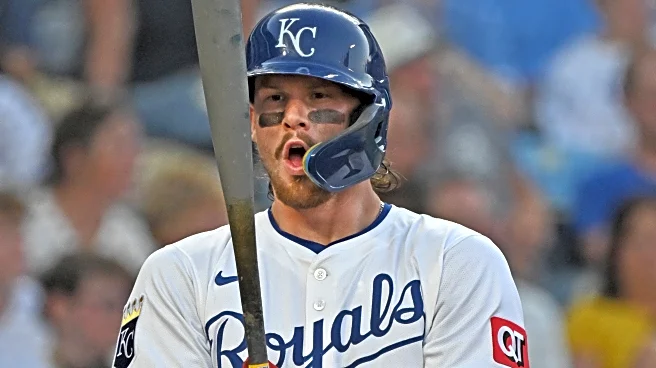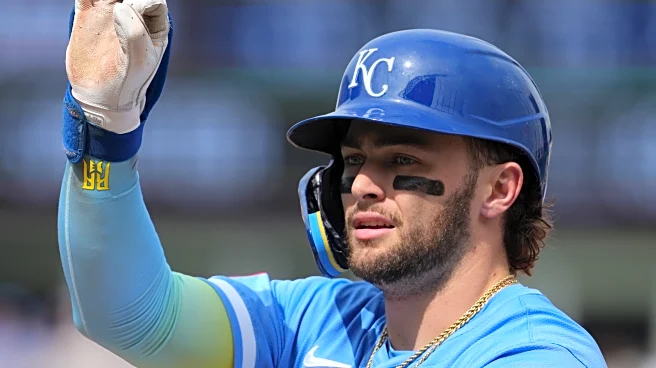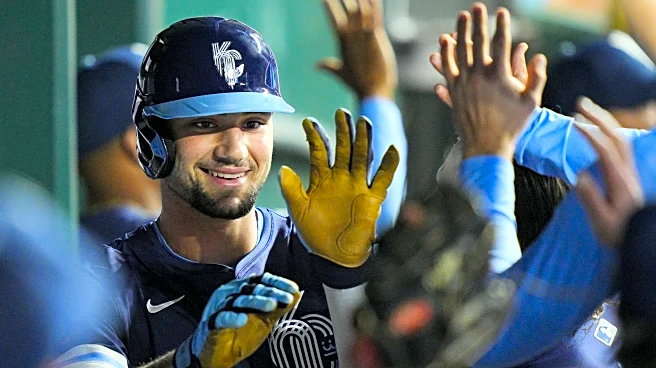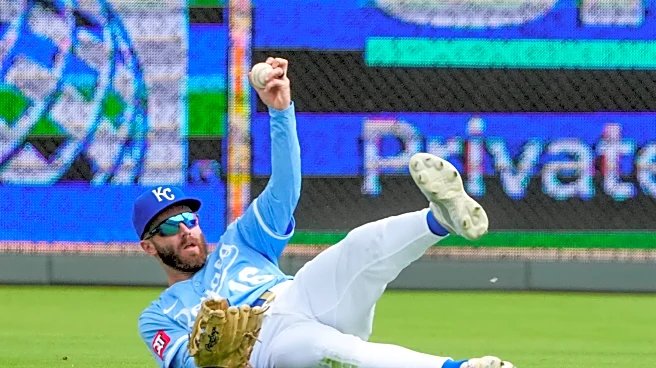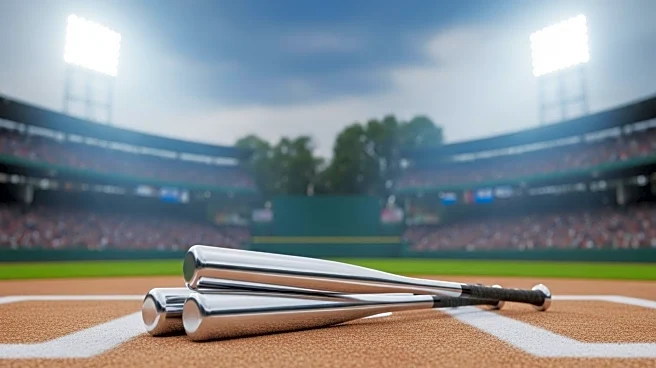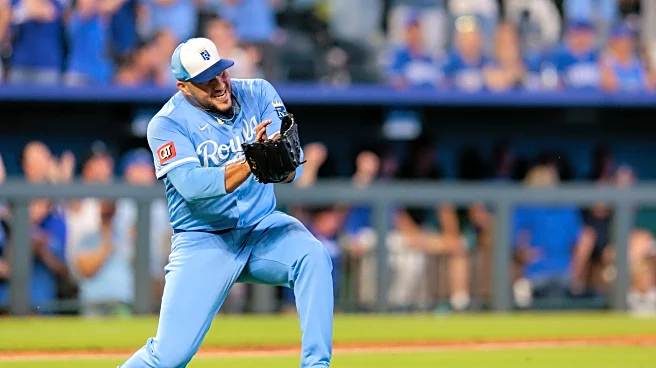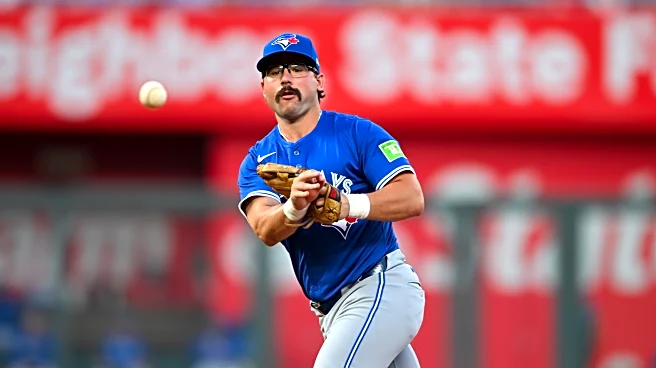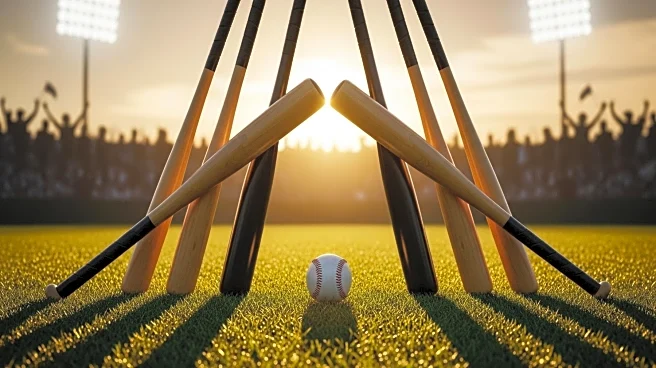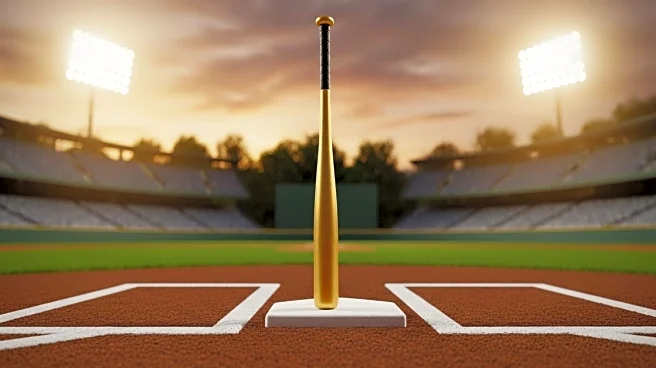Major League Baseball is more than just a collection of 30 teams in some of the biggest metro areas in North America. Every franchise has four full-season minor league affiliates at four levels: Low-A,
High-A, Double-A, and Triple-A, each consisting of progressively more talented athletes.
For Kansas City Royals minor leaguers, a stint with the Triple-A Omaha Storm Chasers is the penultimate stop before their final ascension to the big league squad–if it ever happens. That’s because the jump from Triple-A to the big leagues is hard, and there are plenty of players who dominate in the minors while struggle in the majors.
Why is MLB harder than Triple-A? How is it harder? To help answer that, I asked four Royals who have had experience playing in both leagues this year–Carter Jensen, Jonathan Bowlan, John Rave, and Stephen Kolek–who all supplied some answers.
No margin for error

Every team at every level in Minor League Baseball has some players who are simply tapped out and aren’t talented or athletic enough to go further. Additionally, minor league teams sometimes have fill-ins from other lower levels just to make sure they have enough pitchers or catchers to function as a baseball team.
In the big leagues, that’s not the case: there are no easy outs. There are no easy arms. Everything is hard, and there is no margin for error.
“I would say in Triple-A, you could get away with more mistakes,” Jonathan Bowlan said about the pitching side of things. “In the big leagues, it comes down to just mainly executing the pitch and getting it to the location. If you do miss or you made a mistake, whether it be the middle of the plate or whatever, the hitters here, they will hit it. There’s also times, even if you do execute a pitch, it does get hit.”
For Carter Jensen, every day in the majors is a pitching gauntlet. “The best comparison [for facing big league pitching] is honestly if you were to go to Triple-A, take their few best guys, and then put a whole staff of them together,” Jensen said. “I mean, that’s basically what it feels like. You’re not going to have any cakewalk at bats. You’re going to be facing a dude every time.”
“There’s not as many holes in the big leagues just because, of course in a game they have the experience, they’ve seen all these good [pitchers],” Bowlan said. “Where in Triple-A, you have younger guys that have been coming up. There have been a little more younger guys in AAA than there have been in the past. And I feel like mainly what it comes down to is their experience.”
“The guys [in MLB], they just hit the mistakes,” Bowlan continued. “Your stuff might be good, but if it’s not located, it’ll get hit a long ways.”
Preparation and planning

Winning is everything in MLB, and when you combine analytics teams laser-focused on getting every advantage they can with large coaching staffs, you get a lot of scouting information about your opposing team’s weaknesses. That’s a big difference compared to Triple-A and the rest of the minors, where such information is simply not there.
“[Pitchers] definitely have a plan of how they’re going to attack you specifically” John Rave said. “Whereas when you’re in AAA, it might not be as specific. It might be, ‘Here’s what we do against lefties, here’s what we’re doing against righties.’ But in the big leagues, if you have a hole [in your swing] with all the data and all that stuff, they find it and they attack it and they’re pretty diligent.”
“Scouting reports are very in-depth here,” Stephen Kolek said. “They’re not so much [in Triple-A].”
Kolek continued. “Here, I’ll break each hitter down and kind of figure out different tendencies that they have, different strengths that each hitter may have,” he said. “Does this person hit fastballs well? Where do they hit fastballs? Well, what counts do they hit it in? They hit breaking balls, they hit changeups. I’m really breaking down every hitter and trying to identify where their weaknesses are and kind where my strengths can play into that a little bit.”
“If they know you’re not slugging off speed pitches or whatever it may be, then that’s definitely in the report,” Rave added, “and they’re going to attack it at times that they think is best.”
Jensen agreed with the sentiment, putting it bluntly. “Yeah, preparation’s huge,” he said. “If you don’t do your homework on a pitcher and you’re trying to cram it all in at the last second, it’s going to be a tough day for you.”
Pressure and development

Professional athletes want to win, and by getting to the upper levels of professional baseball it’s evidence that they are good at it. But in the minors, winning is sometimes secondary to developing or working on parts of your game, which can be another wrinkle to the adjustment.
“I’ve kind of spent my time in AAA more working on my craft just trying to either clean up mechanics or kind of work on things that if I was here in the big leagues, I may not necessarily even be thinking about,” Kolek said. At the MLB level, he said, “Hey, I need to go get these guys out. The result matters a lot more than the process, whereas [in Triple-A] I’m kind of working on stuff trying to perfect the process of it.”
Bowlan noted that it’s not just pitchers who are tweaking things: hitters are, too. “In Triple-A, you have guys that are tweaking their swings that are trying to develop against those big league, potential big league arms,” he said.
Of the Royals I talked to for this piece, Jensen was unique in that he has experienced four levels of the baseball just in the last two seasons. So I asked him what he thought was the most significant change, whether it was between levels in the minors to the jump to the majors.
His reasoning surprised me. “Yeah, I think they’re all hard,” Jensen said–which was not the surprising part about his answer, for the record. “Honestly, the jump from Double-A to Triple-A, that first week was the toughest that I’ve had because I think I put external pressure on myself when that wasn’t the case. I was putting pressure on myself when in reality there was no pressure behind it.”
As players climb the ladder of professional baseball, the stakes become higher and higher. It’s only natural to put pressure on yourself to try and prove yourself in a new environment, but doing so just makes it harder.
Predicting big league success

I’m a big fan of Occam’s razor: if there are a bunch of potential answers, the simplest one is probably the best one. And in the case of predicting which players can make the successful jump to MLB from Triple-A (or even Double-A), the simplest answer is that the ones that make the leap are the most talented players. That much is usually true, because the players with the best minor league numbers at the youngest ages almost always do better than the players with worse numbers at older ages.
But listening to players talk about their experiences, I do wonder if some players aren’t able to make the leap to the big leagues almost exclusively because only big league players are properly informed enough to exploit small but impactful weaknesses in their opponents. I wonder just how many players failed to make the leap not because their athleticism wasn’t enough, but because they crumbled under pressure they foisted upon themselves.
Baseball is hard. It is often humbling. That, however, is why we love it. Nothing is given to these players, and when I asked Rave about the difference between the two levels, one of the first things he said was one of self confidence. “You earn the right to be here.”


